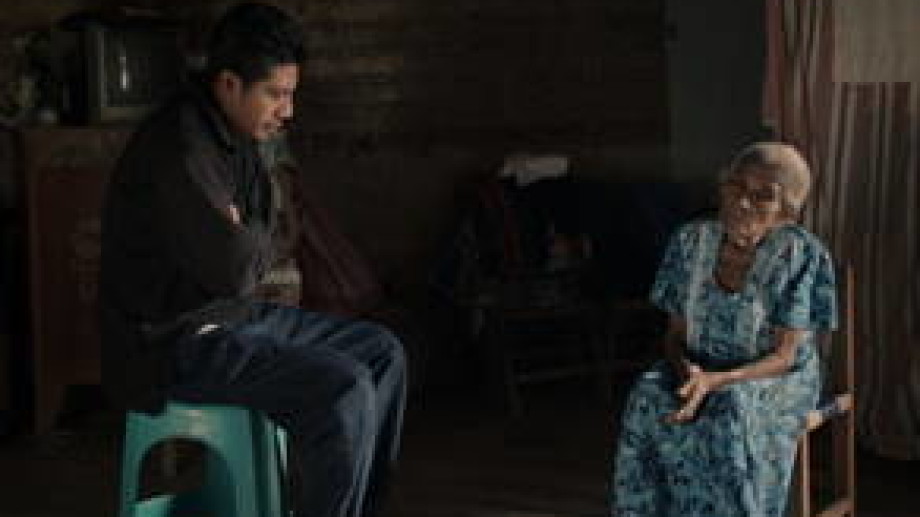
The singular vision of the “American Dream” as we have known it no longer exists. In the late 19th century, immigrants moving to the United States came here determined to settle down and create a better life for themselves. Though this might still be the case for some, the American Dream has drastically evolved. It's the 21st century, and in a new version of the dream, the immigrant comes to America to make enough money to return to his or her home country and live a better life there. Here and There (Aquí y allá) evidences this beautifully in its portrayal of a Mexican man's return to his village after spending time working in New York to support his family.
The film chronicles Pedro's quiet homecoming and pursuit of happiness in Guerrero, Mexico. After Pedro reenters his family's life in the flesh for the first time in what must be years, he slowly settles back into the gentle rhythms of life at home. Pedro's daughters Lorena and Heidi are distant at first—Heidi seems shy and Lorena neutral toward him as they sit around the breakfast table before school. Slowly, they warm up to him again. His wife Teresa is affectionate as ever, whispering her joy over his return in the shadows of their bedroom. As he once dreamed of doing, Pedro starts up a band called the “Copa Kings” with some cousins and friends. Teresa soon is with child. It seems like Pedro's dream has come true.

Still, his bed of roses is not without its thorns. The band struggles to find paying gigs. Teresa falls ill and is forced into early childbirth, and Pedro has trouble paying the hospital bills. Eventually, he needs to find other work to support the family, but jobs are scarce, and after he is laid off from working on a construction site, he is hard-pressed to find employment. Pedro begins to consider returning to the United States to work again so he can send more money home to his family. The new American Dream has failed him.
Here and There presents disillusionment with this new American Dream through Pedro's failed attempt to return home permanently, but throughout the film, there is also an underlying alienation from “home” for Pedro. The film's title itself suggests a dichotomy in the definition of “home”: is it here or is it there? Is it where one exists, or where one lives—or both? Pedro's family, band, and life are in Mexico, but the way he can make a living is in the United States. Living in the United States alienates Pedro from his life in Mexico, leading the audience to wonder with him, where does he belong?

The film makes arguments for both sides. Mexico is where Pedro's family is—not only his wife and children, but also his extended family, and moreover, his community. His roots are in Mexico. But, he does still have friends in the United States as well—when a young man asks him to help him get to New York, Pedro calls someone in the United States and vouches for the boy. Pedro knows that if he ever goes back, he will have friends there, as well as a way to make a living.
In the end, this boy represents the next wave of Mexicans looking for that new American Dream. After Pedro asks his friends to lend the boy money to help him get started in New York, the boy asks Lorena, with whom he has kindled a relationship, to wait for him to return. In this way, the dream lives on. It has failed Pedro, and the film indicates that the future may be bleak for the next generation, but this boy and Lorena are still full of hope. This is Here and There's ultimate triumph: it subtly champions the hopes of the young despite its focus on an older generation resigned to the bitter cycle in which they are trapped. Though it looks like the youths are headed down the same path, the audience cannot help quietly rooting for their American Dream to come true.
Here and There screens October 2 at 6:00pm and October 10 at 9:00pm.
Corey O'Connell is a member of the NYFF Critics Academy program. You can follow her on Twitter at @koreyo19.



